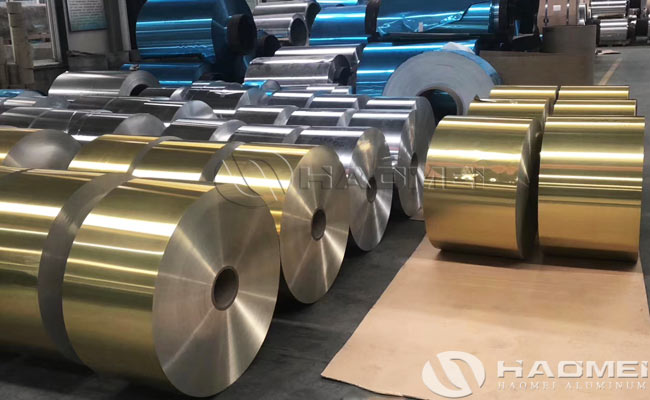The alloy grades of aluminum air-conditioning foil mainly include 1100, 1200, 3102, 8011, 8006, etc. Whether it is made of hot-rolled billet or cast-rolled billet, the main alloy composition of air-conditioning aluminum foil should meet the requirements of GB 3190-2008. However, during production, the actual control composition range of different manufacturers is different. The control range of the chemical composition mainly takes into account the air conditioning aluminium foil product’s tensile strength, elongation and cupping value and other technical indicators to meet user requirements.

At present, the thickness of air-conditioning foil is generally 0.10-0.12mm, and there is a trend of thinning toward the thickness of 0.090mm. The surface of the aluminum foil should be smooth and clean, and no defects such as corrosion, holes, creasing, brown oil spots, and open seams that may affect use are not allowed. For the aluminum foil for air conditioner in O state, the water-brushing test on the surface shall not be lower than Grade B.
Hydrophilic foil is the main raw material for heat exchange fins in air conditioners. It is widely used in household air conditioners, refrigerators, car air conditioners and other refrigeration equipment. Compared with ordinary light foils, hydrophilic air-conditioning foil has the following advantages:
1, It can increase the anti-corrosion, anti-mold, and no peculiar smell;
2, The condensed water on the accumulation surface of the heat exchange fins is evenly distributed on the surface, and will not cause the accumulation and blockage of the heat exchange fins after the formation of water droplets, which affects the heat exchange conditions, thereby increasing the heat exchange rate by 5%;
3, Since the water has no beads, the noise caused by vibration is correspondingly reduced;
4, It can prevent the air conditioner oxidation powder from blowing into the room and adversely affect the human body, which meets the requirements of environmental protection;
5, Hydrophilic aluminum foil for air conditioner radiator should meet YS/T95.2–2001 regulations.



